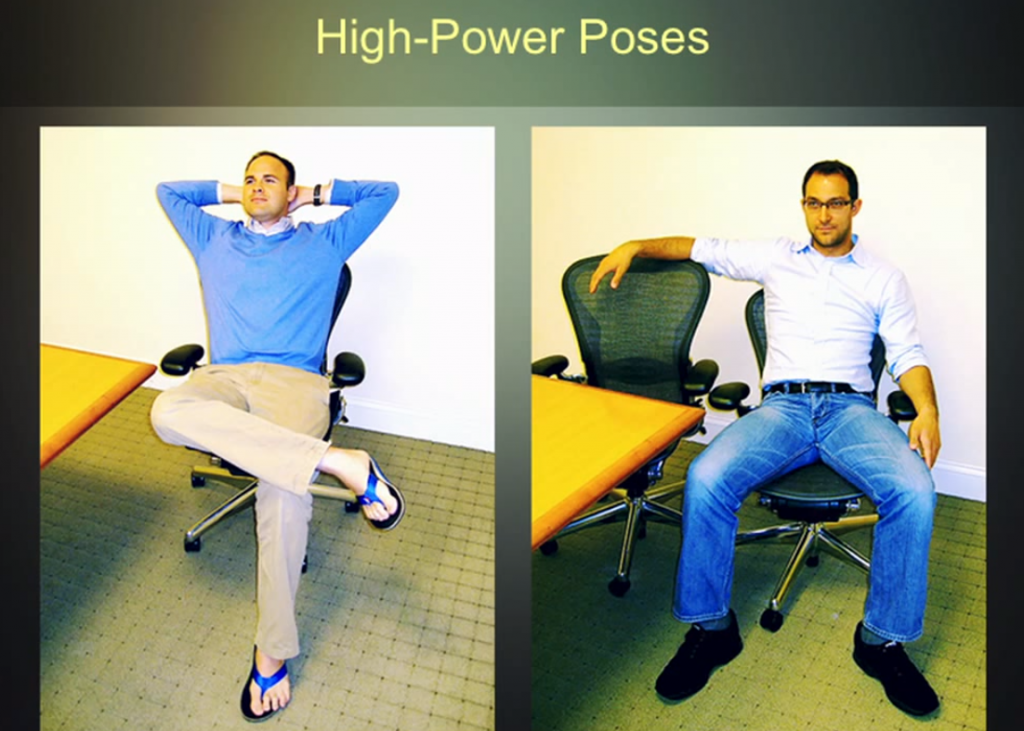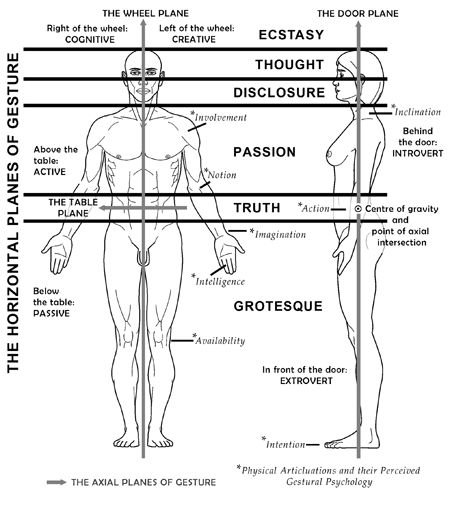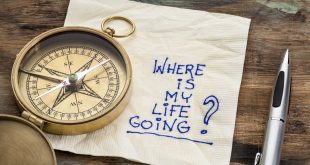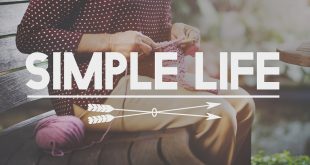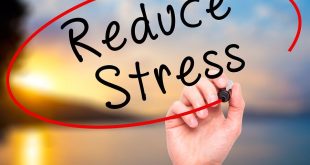CONFIDENCE- 4 STEPS TO FEELING INNER CONFIDENCE
-by CJ Liu
What is confidence? According to Merriam-Webster dictionary, confidence is:
A feeling or belief that you can do something well or succeed at something; A feeling or belief that someone or something is good or has the ability to succeed at something; The feeling of being certain that something will happen or that something is true.
Why does displaying confidence matter? Why does body language matter? In our heart of hearts, we want folks to “get us”, to understand our personality, to accept us for who we are, and to give us their respect. We want a sense of self-esteem and personal power. In order for anyone to understand, like, and respect us, we must first convince them that we are safe, trustworthy and that we mean no harm. Whether we are in a relationship at home or work, there are subtle cues that we give out to build trust. These physical and emotional cues came about over the course of human evolution and we pick up and display many of them subconsciously. Referred to as “body language” or “energy,” we broadcast these signals during job interviews, group or one-on-one meetings, and even on a date.
There are many ways to achieve confident body language. In the blog post and attached video, I share body language expert Mark Bowden’s neuroscience-based approach to body language and how to get others to feel confident about you. I found Mark’s approach both fascinating and infinitely practical and logical. I also appreciate how he has linked body language as a natural outcome of how our brains and body work.
A few years ago, I developed my own approach to confident body language by focusing on generating a feeling of confidence on the inside first. The logic behind this approach is that feeling a sense of inner confidence leads others to feel confident about you too. I developed this approach based on my own experience and countless hours of feedback from dear friends who helped prepare me for my TED Talk in front of 2,600 people at the University of Washington. Despite spending several hours wordsmithing the presentation, the biggest improvement in my talk did not come from the words, but from a feeling of inner confidence grounded in an authentic desire to be of service.
Expressions such as “You need to feel confident from the inside” or “you need to feel it energetically” are thrown around as truisms in life coaching circles all the time. But, what the heck do these really mean and how do you make them real? First, let’s address what it means. The premise is that first you must feel as if you’re speaking your truth from the depth of your heart and soul. While most coaches emphasize this impassioned heart-based approach to eliciting inspiration, many forget the importance of also approaching the audience in a more grounded concrete way. The trick is to appeal to both those who want to be inspired and those that want something practical.
So, what does this all mean in concrete terms when writing and preparing your presentation? Try out this simple four-step process the next time you are planning a presentation and notice what shifts for you:
- STEP 1: Get in your Head. This is the process that most of us do naturally. Jot down what you think you want to say. Get clear with: who you are speaking to, the three things you want your audience to walk away with, and your call-to-action. Jot down a rough outline of what you want to say.
- STEP 2: Get grounded and Connect to your Body. To tune into your deeper wisdom, it’s important to first be grounded and rooted in reality. To do this, you first need to be calm in your mind and body. Try some simple breathing exercises, like this Yogic-3 part breathing meditation, which both calms your nerves and develops a connection between your mind and body. After you become grounded within your body, look at your initial outline and ask yourself, “Is what I’m saying actionable? How could I modify it to make it practical and actionable?” Then, jot down your thoughts in your outline.
- STEP 3: Connect to your heart. If you want to talk from the heart, it’s important to first feel from your heart. I recommend using any one of these heart opening meditations, whichare designed to help you feel your heart. Try either a Buddhist heart meditation, a Shamanic heart meditation, or a Yoga-based heart meditation. From this meditative heart-based place, write out what you want to say in a quick outline form. Think of things like what you want your heart to convey, what universal truth matters at a deep level that you want to share with everyone, and how you can be of service to others. Then, write this all down in your outline.
- STEP 4: Integrating Mind-Body- Heart. The last part is integrating thoughts gathered in steps 1-3 together into one comprehensive outline. This outline includes a holistic expression of all of you; your mind, your heart and your inner wisdom. It’s at this juncture that your left brain comes in to do the heavy lifting by critically examining wording, pace, and flow This process leads not only to a representation of the whole you, but also provides a sense of inner confidence.
- STEP 5: Add body language: After you have nailed down the words, read the below blog post and think about what facial expressions, hand gestures, and body movement would help convey your message visually. What you’ll notice is that, when you try these body gestures, you’ll feel more congruent because they come from a grounded and authentic place on the inside.
In my own personal experience, I’ve found that being grounded with my heart and body, which I call energy, is the key component of feeling confident. This is mainly because you are in alignment and congruent with your personal truth. Though you may not find this in any book or research report, it’s real. When a speaker truly connects from their heart to yours with a universal truth that comes from a practical and loving place, it’s pretty hard not to be moved in some way. While I use to fear and dread presentations, my TED Talk was an exhilarating and surprisingly enjoyable experience because it came from a real place of personal expression. In the end, I think all of us yearn for deep meaningful and soulful personal expression and connection, so try the process above and experience what is possible.
WHAT IS BODY LANGUAGE?
Body language provides an immediate signal of our feelings and intentions towards another person or situation. Over time, humans have developed a set of body movements and positions that enable us to both protect our vulnerable areas and defend our territory. The body language we develop to protect and defend result in unconscious signals we send to others. For the most part, most people are largely unaware or unconscious of both the body movements we send to others and we receive from other’s body language. Sadly, our body language cues result in both receiver and sender making snap judgments based on your body language alone.
While both making and observing body language is unconscious, we can still increase our consciousness through learning it. The benefit of learning body language is being able to effectively relate to people in a trusting and positive way even when aren’t feeling it on the inside initially. For example, we all know that showing confidence is critical during a job interview, but what if you are feeling nervous on the inside at a time? Surprisingly, body language is 55% of the equation during these exchanges. How can you project an outward signal of confidence to your potential employer, even when you are feeling an inner sense of anxiety?
According to UCLA professor Albert Mehrabian, about 7% of what you are communicating when trying to motivate others is words. The remaining 93% is inferred by other factors (38% of your communication based on the tone of your voice and 55% body language). But how do we get started? Very few of us can afford to hire a body language expert like Mark Bowden. So, the next best thing is to learn from experts through a guide like below, or through Mark’s website and YouTube channel.
HOW DOES BODY LANGUAGE WORK? WHAT IS THE NEUROSCIENCE BEHIND BODY LANGUAGE?
When we see someone walking toward us, we are biologically programmed to quickly assess if that person is a potential threat, are more powerful than us, and if they are emotionally well (mad, sad or happy). Mirror neurons in our brain are responsible for creating this assessment. It does this by copying the behavior we observe and relating it to our own database of experiences and feelings, then ultimately making an educated guess on the intentions and feelings of another person. Mark describes in this video the limbic system’s role in reading body language here(http://youtu.be/uso4DZGPKY4?t=4m54s) and the neuroscience behind body language here (https://www.youtube.com/watch?v=uso4DZGPKY4&feature=youtu.be&t=2m32s).
HOW TO READ BODY LANGUAGE? BODY LANGUAGE CUES
The key to understanding and reading body language is remembering that we are part of the animal kingdom. Like animals, we have primitive instinctual body movements that were developed over time to protect, connect, and defend ourselves out in the wild. Listen as Mark describes how our body gestures are mapped to our desire to protect ourselves here (http://youtu.be/uso4DZGPKY4?t=28m33s).
Here’s how it works. Our brains and five senses are dutiful bodyguards; always scanning the horizon to check for anything that may be unsafe. Will we be predator or prey? Our eyes are the first line of defense and they carefully watch for signals that may endanger our survival. Our body language expresses what our brain and eyes capture and is one of the easiest ways that others use to signal their intentions and feelings. Over time, our brains have evolved to instantly assess body language as a method of determining if someone is safe or not.
As a rule of thumb, we feel more comfortable when things are transparent, or out in the open, so we can see things clearly. The more visual data offered, the safer we feel.
In the sections below we’ll cover general patterns you may observe in human body language related to our survival instincts.
DEFENDING/FIGHTING: GET BIG, MARKING YOUR TERRITORY, AND GETTING AGGRESSIVE: ALPHA MALE AND DOMINANT BODY LANGUAGE.
 What would you do if you were trying to protect and defend your turf and set up boundaries? Animals mark their territory with their scent. Not surprisingly, humans do the same thing. They spread their odor when they expose their underarms (see pictures below) when sitting or standing. Another way animals protect and defend is puffing up to appear bigger. Guess what? Humans have the same defense of appearing larger when they spread their arms and legs out. Hear Marks’ explanation and see a demonstration here. Last, you may fight for your territory by intimidating your opponent, which is what some of these poses achieve. Opening up your exposed areas (solar plexus, throat, underarms) signify that you aren’t threatened by the other party.
What would you do if you were trying to protect and defend your turf and set up boundaries? Animals mark their territory with their scent. Not surprisingly, humans do the same thing. They spread their odor when they expose their underarms (see pictures below) when sitting or standing. Another way animals protect and defend is puffing up to appear bigger. Guess what? Humans have the same defense of appearing larger when they spread their arms and legs out. Hear Marks’ explanation and see a demonstration here. Last, you may fight for your territory by intimidating your opponent, which is what some of these poses achieve. Opening up your exposed areas (solar plexus, throat, underarms) signify that you aren’t threatened by the other party.
Many of these poses are considered “high-power” poses. However, Mark cautions that these may also expose signals of vulnerability by trying to reassert dominance (http://youtu.be/uso4DZGPKY4?t=5m56s).
PROTECTING: COVERING UP: WHAT IS THE AFFECT OF COVERING UP OR OPENING UP OUR BODY LANGUAGE?
 The rule-of-thumb is that the more someone can see your body, the more they can trust you. Opening up provides a larger amount of visual data so that others can use their judgment in figuring out your intention and feelings. Gestures that can suggest covering up or hiding something include hands in pockets, balled up fists, body turned away, not maintaining eye contact, head turned away while speaking, and crossed arms. Mark demonstrates this here.
The rule-of-thumb is that the more someone can see your body, the more they can trust you. Opening up provides a larger amount of visual data so that others can use their judgment in figuring out your intention and feelings. Gestures that can suggest covering up or hiding something include hands in pockets, balled up fists, body turned away, not maintaining eye contact, head turned away while speaking, and crossed arms. Mark demonstrates this here.
The mind automatically jumps to conclusions on why or what someone may be covering up. Our mind jumps to the worst case, maybethat person is hiding a weapon or have some veiled nefarious plans. The opposite of these gestures is one similar to a dog rolling over and exposing its belly, which is how a dog shows respect for authority.
In Mark’s book “Winning Body Language”, he provides an example of covering up at a business meeting. Mark describes a “TablePlane”, which is an imaginary plane that cuts through the body horizontally at the navel. If you take your center of gravity below this plane when sitting in a meeting, you will be viewed as passive, sluggish, heavy, and somewhat depressed. However, if your center is above the TablePlane, then you are perceived as lighter, more nimble mentally and “active”.
PROTECTING/HIDING OR CAMOUFLAGE: MAKING YOUR BODY SMALL: WHAT ARE SIGNALS THAT SHOW INSECURITY? OR STRESS?
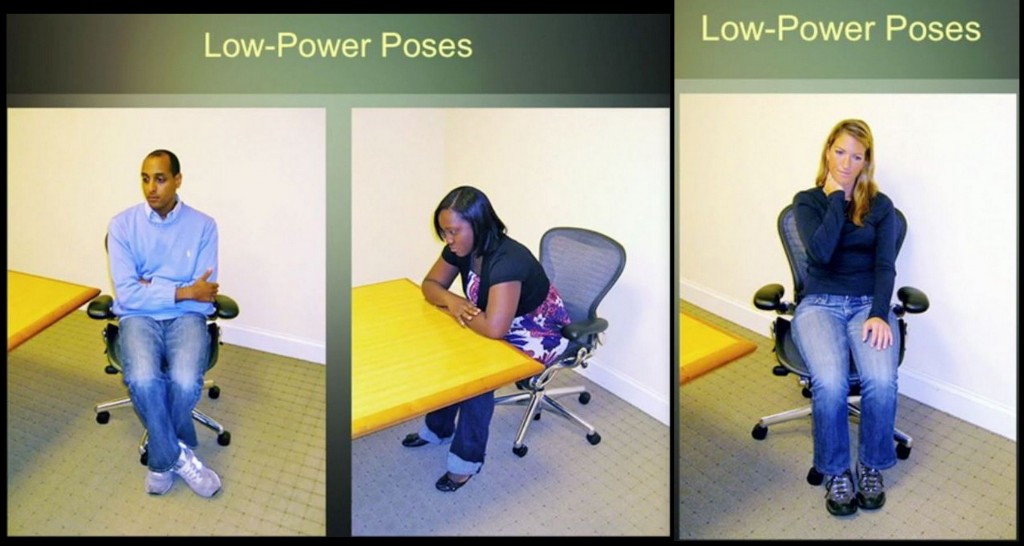
Mark demonstrates moves that make you look insecure here (http://youtu.be/uso4DZGPKY4?t=11m13s).
Many of these low-power poses originate from our animal instincts to keep safe. If there is a predator and you are frightened, you will make your body small to hide (curl your shoulders in, hunch down), try not to move and attract attention by camouflaging or by covering your vulnerable parts (e.g.-neck, stomach) with your hands and your body. Generally speaking, these gestures signal that you are feeling insecure.
Mark demonstrates body language that conveys a sense of desperation in a job interview here.
HOW CAN BODY LANGUAGE BE MISREAD?
While the above are rules of thumb, Mark cautions folks about reading too much into body language. Mark also suggests that we should dismiss old folklores about body language, which has been turned over by science. For example, it used to be that if someone isn’t looking you in the eye, they were not telling the truth. Current research, however, has proven just the opposite; liars will look someone straight in the eyes. Remember that body language is only 55% of the equation not 100%, so there is room for error. Gestures don’t tell the whole story. Plus, a person well versed in body language could be faking it or purposely giving off a signal that means something entirely different than what you are assuming. Mark shares his observations about common errors in reading body language here (http://youtu.be/uso4DZGPKY4?t=36m28s). He explains how power moves could signal true power or vulnerability here.
HOW CAN WE PORTRAY A SENSE OF CONFIDENCE IN OUR INTERACTIONS?
What happens when you just aren’t feeling confident and you need to fake it until you make it? The next sections talk about some ways of training your body and thereby your mind to feel more confident. As mind-body-spirit are connected, you can train your body and have the other parts change as well.
Another approach is to work through a therapeutic model. As a career coach, I’ve found that confidence issues often have to do with bad experiences that person may have encountered in their past. For example, a presentation that went sideways, a teacher who said you were hopeless at presenting anything, etc. The end result is a sense of feeling shame, guilt, and inadequacy—not confident. Often times, clearing the trauma from the events will help confidence issues.
Here are two resources to try if you think a past experience may be tanking your confidence. While you may not experience panic attacks or have nervous habits, this will give you structure to start investigating and possibly minimize the anxiety. Another resource is using the EFT protocol. You can get a great deal of relief just by substituting your content for the emotion discussed in the video and tapping.
WHAT DOES DESPERATE JOB INTERVIEW LOOK LIKE?
Mark demonstrates what desperate body language looks like here: http://youtu.be/2rSijMXH1_0?t=1m9s
HOW CAN YOUR BODY LANGUAGE INSTILL A SENSE OF INNER AND OUTER CONFIDENCE? WHAT IS THE TRUTHPLANE?
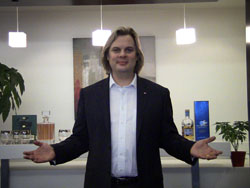 The TruthPlane is located in a vulnerable area around your belly button. Exposing and gesturing this area is key if you want to instill a sense of confidence in others and feel a sense of internal calm.
The TruthPlane is located in a vulnerable area around your belly button. Exposing and gesturing this area is key if you want to instill a sense of confidence in others and feel a sense of internal calm.
Here are some excerpts from “Winning Body Language” that explains the TruthPlane and how to use it. Check out the video to get a visual example of how to use the Truth Plane here.
“ Placing your hands in the TruthPlane is the single most effective way for the business communicator to fight back effortlessly against the natural stress reaction and send out a clear signal to the audience that there is no problem, that everyone, including you, can be confident. “ p52
“Lead your audience members to become confident in you and in themselves by placing your hands and gestures open in the Truth Plane when you communicate with them, framing their access to your vulnerable belly area, and bringing unconscious attention to it.” P 57
HOW DOES LOOKING SOMEONE IN THE EYE INSTILL CONFIDENCE?
Mark discusses the importance of looking into someone’s eyes as a way to instill confidence here (http://youtu.be/uso4DZGPKY4?t=33m5s).
HOW CAN WE FAKE CONFIDENCE UNTIL THESE MOTIONS FEEL NATURAL?
Mark Bowden talks here (http://youtu.be/uso4DZGPKY4?t=2m10s) about Amy Cuddy’s video on embodied cognition and how you can change your neurotransmitters in your brain and body chemistry via testosterone, dopamine, and oxytocin to change the way your mind works. Bottom line, if you want to look and feel confident, stand in the gestures that instill a sense of power. Over time, you will trick your body and mind to fake it until you make it.
WHAT ARE CULTURAL DIFFERENCES FOR MALE AND FEMALE? HOW TO READ FEMALE BODY LANGUAGE AT WORK?
Each culture has prescribed body language based on what gestures are acceptable for the woman and man. Cultural norms for Muslim, Japanese, and American women may very well affect their body movements. Mark describes these here. (http://youtu.be/uso4DZGPKY4?t=40m35s)
What are some common gestures that aren’t helpful in a work setting? Mark describes here (http://youtu.be/uso4DZGPKY4?t=42m6s) what women do among their male colleagues that aren’t helping them portray confidence.
Here (http://youtu.be/uso4DZGPKY4?t=47m52s), Mark reveals a posture that women may make while under stress that could give off the wrong signal. Imagine how this will appear at a cocktail party.
WORK SCENARIOS AND BODY LANGUAGE
WHAT DO WE NEED TO KNOW ABOUT BOARD MEETINGS OR ANY MEETING AT A TABLE? WHY DO WOMEN HAVE A HARD TIME IN THESE MEETINGS?
It may help to think about dinnertime with your family. Many of the behaviors we see at boardroom meetings relate to a similar experience where we break bread and share food. Mark explains how a male or women with a lower tone projects a bigger sound and more confidence. Instead of a lower tone, women normally project their voice higher to be heard, which translates to men as sounding an alarm. Listen to Mark’s explanation here (http://youtu.be/uso4DZGPKY4?t=43m21s).
HOW DO SKYPE VIDEO CALLS AFFECT OUR ABILITY TO READ SOMEONE ACCURATELY? HOW CAN WE BE SAVVY ABOUT OUR BODY LANGUAGE ONLINE?
Listen to Mark’s explanation of why open gestures displayed on Skype generally feel more trusting and closed ones feel less comfortable here (http://youtu.be/uso4DZGPKY4?t=18m18s ).
HOW TO LOOK COOL IN A NETWORKING OR SOCIAL SITUATION?
Mark demonstrates what warm and welcoming body language looks like here (http://youtu.be/2rSijMXH1_0?t=2m56s). One more mention of a posture a woman may make at a cocktail party that may give off the wrong signal here (http://youtu.be/uso4DZGPKY4?t=47m52s)
WHAT DOES YOUR HANDSHAKE MEAN?
Mark demonstrates various handshakes and what a weak handshake looks like here. More on handshakes: http://youtu.be/7GShH3pwU04 and http://youtu.be/2rSijMXH1_0?t=6m11s.
HOW DO WOMEN FLIRT?
Mark shows us one way women flirt here (http://youtu.be/uso4DZGPKY4?t=50m5s).
HOW DOES PACING AFFECT THE AUDIENCE?
When people are pacing or swaying back and forth while presenting it gives off signals of stress and being a moving target. Check out more here: http://youtu.be/uso4DZGPKY4?t=14m17s.
WHAT SIGNALS DO YOU GIVE OFF WHEN YOU ARE STANDING AT YOUR CO-WORKERS OR BOSS’S DOOR? WHAT ARE CHALLENGES WOMEN HAVE IN THESE ENVIRONMENTS? (see graphic
There is a vertical plane that divides your body (similar to TruthPlane in previous section). If you stand in front and have more of your body in front of the door opening, you look more confident and assertive. The opposite holds true if you stand behind the door opening (See illustration above)
HOW DO YOU GET FOLKS EXCITED AND PASSIONATE ABOUT YOUR TOPIC? WHAT IS THE PASSION PLANE OR ECSTATICPLANE?
There may be times during a talk that you want to inspire and excite folks. Mark demonstrates how using hand gestures in the Passion Plan (at chest level) can bring passion to your communication and raise the heart rate and activity for both you and your audience. Check it out here. (See above illustration of PassionPlane)
HOW DO I CREATE A SENSE OF CALM WITH MY BODY LANGUAGE? WHAT IS THE GROTESQUE PLANE?
Lowering your hands to your sides or your private area, which Mark describes as your GrotesquePlane, lowers your energy and lowers the energy of your audience. This gesture may be helpful if you are doing something calming like a meditation, but less ideal for something like an inspirational talk. (See above illustration of Grotesque plane)
WHAT IS THE DIFFERENCE BETWEEN A TRUSTWORTHY AND CREEPY SMILE? (TEDX)
Mark demonstrates facial gestures. Check out here for an illustration of an authentic smile and one that may be viewed as creepy
HOW DO YOU INCORPORATE SOME OF THE IDEAS ON POSITIVE BODY LANGUAGE IN THIS POST?
Feeling a bit overwhelmed with all this information? I suggest taking one idea at a time and get into your body’s muscle memory. Try this method and see how this works out for you. For a whole week try talking in the Truthplane. Next week, try gesturing within the passion plane and see how it feels. You may want to start off putting it all together at once, by mirroring someone like Mark Bowden. Check out our conversation about how to engrain these body movements so they feel natural here (http://youtu.be/uso4DZGPKY4?t=59s/).
WHY DO WE FEEL UNCOMFORTABLE WITH CLOSE TALKERS? WHAT IS IDEAL DISTANCE BETWEEN YOU AND ANOTHER PERSON?
You want to see a person’s feet as they signal a person’s intention and if they are safe or not. Watch Mark demonstrations here: http://youtu.be/2rSijMXH1_0?t=5m11s.
TEDX: MORE TALKS ON BODY LANGUAGE
https://www.ted.com/topics/body+language
HOW CAN YOU TELL IF SOMEONE IS LYING?
Check out this interview with Vanessan Van Patten about teens and lying. This can be used for adults too: http://www.fireitupwithcj.com/911-parental-guidance-talking-with-your-teens/.
FUN TIPS TO FIGURE OUT IF A GUY OR GAL IS INTO YOU.
Reading men: http://www.cosmopolitan.com/sex-love/advice/g3961/body-language-decoder/?slide=24
Reading women: http://www.scienceofpeople.com/2013/06/female-body-language/
BODY LANGUAGE EXPERT MARK BOWDEN
Mark Bowden is a body language and behavior expert and the creator of TRUTHPLANE®, a communication training company and unique methodology for anyone who has to communicate with impact. With a reputation as one of the world’s foremost authorities on nonverbal communication, Mark travels all over the world to train groups and give keynote speeches. His clients include leading businesspeople, teams, and politicians, presidents and CEOs of Fortune 500 companies and current Prime Ministers of G8 powers.
His 3 books are the bestselling Winning Body Language, Winning Body Language for Sales Professionals, and Tame the Primitive Brain – 28 Ways in 28 Days to Manage the Most Impulsive Behaviors at Work. Mark is particularly honored to now be in the TED community, having spoken on the main stage at TEDx Toronto! He is a regular contributor to TV shows, and you can see him currently on CTV’s daily talk show, The Social as the resident body language expert. Mark was voted #1 in the Worlds Top 30 Body Language Professionals for 2014 by GlobalGurus.org
Recent clients are: Aird & Berlis, Shibley Righton, Coup de Maitre (Montreal), Blakes, Cassels Brock, Brandes Investments, Fidelity Investments, RBC , ING, AVIVA Insurance, London Life, GenRe, Gartner, Celestica, AMD, UM New York, Viacom, Ogilvy, BBC (UK), ITV (UK), CBC (Canada), Walmart, Nestle, Disney, Best Doctors, University Health Network, OMA, Roche, Novo Nordisk, Purdue, AstraZeneca, Audi, Toyota, Kroll, Barrick Gold, Lake Shore Gold, Schulich Executive Education Centre, Rotman School of Business, and McGill University.
 Conscious Calling
Conscious Calling
